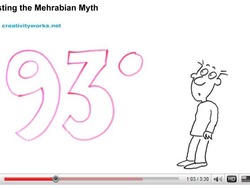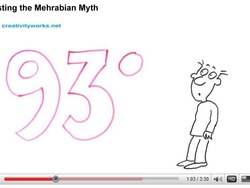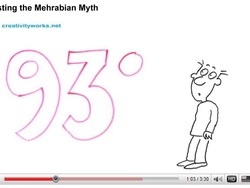


Here’s an urban myth about communication that’s harder to swallow than a whale. It’s one of the most influential and widely quoted statistical stories around, and it goes like this:
When someone speaks to us, only 7% of what they mean communicates itself through the words they use.
You have probably come across this figure before. It’s based on research which apparently demonstrates that most (55%) of what a speaker means is conveyed through their facial expressions and the rest (38%) is communicated through tone of voice. In one fell swoop, words are relegated to the role of bit-part players on the stage of communication. They hardly seem to matter at all.
But as with most urban myths, when you chew the story over, the alarm bells of common sense start ringing. Is it really possible that if I get lost and ask a passerby for directions, I’ll have to work out the correct route mostly from their facial expressions and tone of voice, and not from the words they use? As Mr Spock might say, “It’s communication, Jim, but not as we know it.”
Google the name ‘Mehrabian’ and you’ll discover any number of websites eager to inform you that these statistics are based on research done by Professor Albert Mehrabian. But – surprise, surprise – his research proves nothing of the kind, as he’d be the first to tell you.
The Devil's in the Detail
On his own website, Mehrabian expresses the results of his research in the form of an equation:
“Total Liking = 7% Verbal Liking + 38% Vocal Liking + 55% Facial Liking”
He goes on to explain that “this and other equations regarding relative importance of verbal and nonverbal messages were derived from experiments dealing with communications of feelings and attitudes (i.e., like-dislike). Unless a communicator is talking about their feelings or attitudes, these equations are not applicable.”
What the peddlers of the urban myth version of Mehrabian’s statistical story don’t make clear – or perhaps don’t know themselves – is that Mehrabian’s research was concerned with a very specific, and limited, aspect of nonverbal communication – it’s not about communication in general. His work relates only to inconsistent messages about feelings and attitudes, that is, face-to-face exchanges in which the meaning of what we say is contradicted by our body language and tone of voice.
Mixed Messages
Imagine a situation in which you’ve had a disagreement with a colleague but they insist they’re not annoyed with you despite the fact that they’ve got their arms tightly crossed, their head is turned away from you, they avoid eye contact and they deliver their words through clenched teeth.
Or you tell a friend a joke and they respond with a stony face but tell you they think your joke is really funny. Chances are you’ll be more influenced by their impassive look than their encouraging words – and you won’t be telling that joke again in a hurry!
As a result of his experiments, Mehrabian concluded that when we’re faced with a mixed message like the ones above, we’re much more likely to believe that the real meaning is contained in the nonverbal signals the person is giving off, rather than in the words they’re saying. His famous statistic is his attempt to express this kind of experience in the form of an equation.1
But – and this is the crucial point – we must not lose sight of the fact that Mehrabian’s statistic only makes sense when applied to the very narrow range of communicative experience that he was investigating, i.e. the ambiguous expression of feelings and attitudes. The attempt to apply it to all face-to-face communications is both wrong and ridiculous.
The Appeal of the Urban Myth
So why has the distorted version of Mehrabian’s statistical story been so eagerly embraced? Well a large part of its appeal – as with other urban myths – is that its message is simple, credible and, above all, surprising. It belittles the power of words and, in an instant, it turns everything we think we know about communication on its head. Could this be why so much current thinking about presentation skills exaggerates the significance of the finer points of delivery while underplaying the fundamental importance of getting the words right?
We should always bear in mind that words are the main ingredient of presentations, talks and speeches. But they have to be the right words, used in the right way, by the right person, at the right time. So maybe it’s no wonder that many of us would rather embrace the false comfort of a spurious statistic than face up to the creative challenge of trying to discover those right words.
Editor’s note: Dr. Albert Mehrabian recently did an interview with BBC radio regarding this statistic. The interview can be heard here: http://www.bbc.co.uk/iplayer/console/b00lyvz9 at about 23 minutes into the program. A whiteboard animation on this myth, done by Shovel’s company, can be found at http://www.youtube.com/watch?v=7dboA8cag1M .
© 2009 Martin Shovel, CreativityWorks
Martin Shovel is co-director of CreativityWorks, a communications consultancy that helps people create speeches and presentations that get results. To find out more visit: http://www.creativityworks.net
Don't miss out on updates and chances
to sharpen your skills with participant-centered learning.




3740 N Chestnut St #113 - Chaska, MN 55318-3053